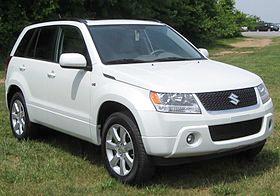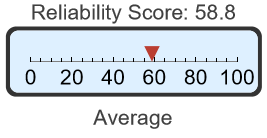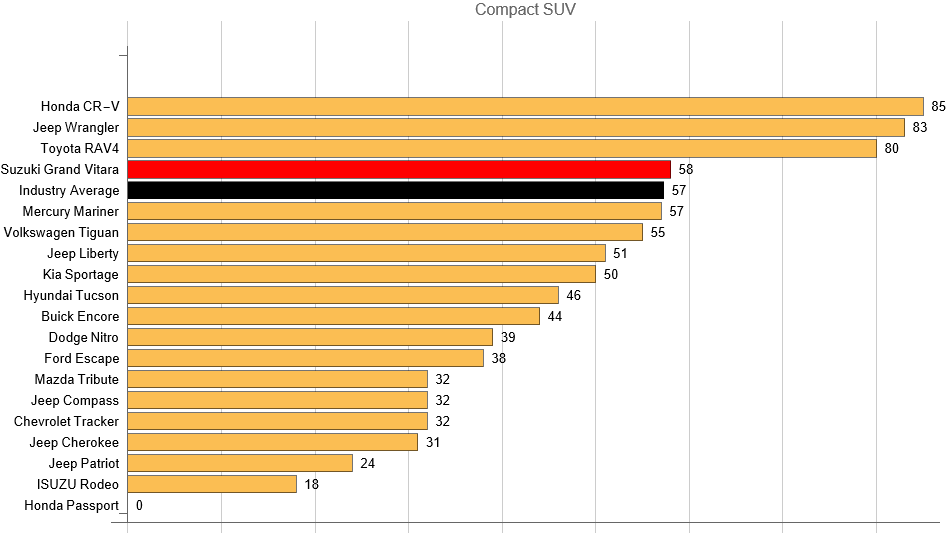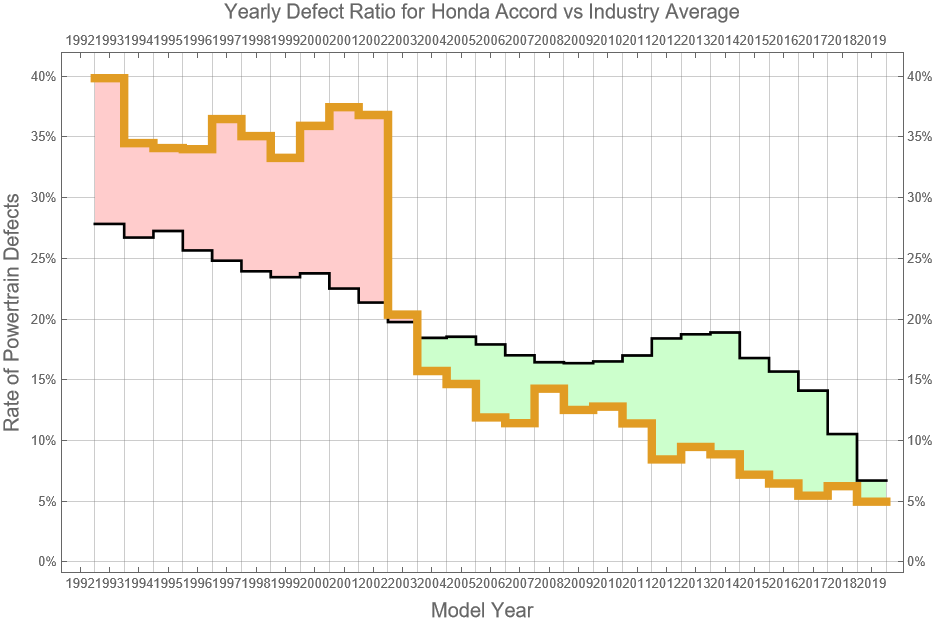** Long-Term Quality Index – Three Million Used Cars Inspected From 1993 To Today **

Dashboard Light is our attempt to offer free information about the long-term reliability of vehicles, forever.
When you search for the long-term reliability of any used car at Dashboard Light, you’re looking at the collective results of over a million vehicles that have been independently inspected by ASE certified mechanics and professional car buyers.
Our study, now called the Long-Term Quality Index, is over four years old and has been designed to focus specifically on those older vehicles that fall off the radar as vehicles age.
Unlike J.D. Power, which focuses their studies on the earliest portions of a vehicles life, and Consumer Reports, which regulates its study to surveys filled out by owners of late model vehicles, LTQI has been designed to assess the long-term reliability of used cars from the point they are three years old to the end of its life cycle.
Every vehicle receives a Quality Index Rating (QIR) that looks like this:
SUZUKI GRAND VITARA

Vehicle count: 879

WHAT IS QIR?
The Quality Index Rating (QIR) offers an overall score based on the frequency of powertrain issues, the mileage distribution of when those issues take place, and the vehicle age at the time of trade-in. You can think of it as a weighted average where we look at a number of factors for a given vehicle model, and then get a single value indicating it’s overall long-term reliability.

WHAT IS A GOOD QIR SCORE?
An average QIR score for a vehicle model is just under 50 due to 0 representing the bottom, with a range of possible scores from 0-100. Most vehicle models fall into the 30-70 score range, with those above 70 being quite reliable in general, while those below 30 being generally quite poor in terms of reliability.

WHAT IS A “POWERTRAIN ISSUE”?
Powertrain issues are defects that exist with either the engine or transmission. These defects are severe enough to impact the operation of the vehicle. In this example, out of the 879 Grand Vitaras that have been traded-in, 4.3% had transmission issues while 9.56% had engine issues. A few vehicles had both issues – however we don’t double-count defects if they happen with the same vehicle. This is how ‘Powertrain Issues’, accurately represents the percentage of vehicles that had either one or both of these issues.
DO YOU TRACK OTHER ISSUES, LIKE THE ELECTRICAL OR A/C SYSTEMS?
No. At the moment our primary focus is on the major mechanical components of the powertrain, as quality and reliability issues with these components have the greatest impact on a vehicle owners ability to keep their car. From a quality perspective, we’re looking at that exact point when an owner has decided that the vehicle they bought at a retail price is now worth only a trade-in wholesale price, and why they made the decision to trade the vehicle in.
WHERE DOES YOUR DATA COME FROM?
Our data is provided by a partnership with a national network of used car auctions, which allows us to get information on vehicles from all across the country with uniform reporting standards.
SO THE DATA IS FROM USED CAR AUCTIONS? WHAT IF YOU’RE JUST GETTING CRUMMY VEHICLES THAT PEOPLE DUMP OFF, WON’T THAT SKEW THE DATA?
We add thousands of new vehicles to our database every week, and while it’s certainly possible that someone could send a “lemon” to auction, the volume of vehicles being processed, and the standardized methods used to assess the vehicles, helps us protect against one or two bad owners throwing off our numbers.
SO WHAT! QUALITY ISN’T EVERYTHING!
You’re right. Quality is just one of many ingredients, and sometimes an owner will get tired of a car well before it wears out. That’s why this study has also been designed to focus squarely at the age and mileage points at which the owner decides to get another vehicle. We want to offer you a long-term understanding of what the ownership experience will be like for that model as it ages over time.

In this example you can clearly see that the Suzuki Grand Vitara gets traded-in at a lower mileage. There is a big pink hump that is evident from 80,000 to 110,000 miles which shows that the biggest concentration of owners trade this vehicle in before it hits the industry average. When you look at the high engine defect rate, you can conclude that engine issues play a role in this decision.
BUT WHAT ABOUT GOOD YEARS VERSUS BAD YEARS FOR A GIVEN MODEL?
We break down that information as well so you know which model years to avoid.

In this example, which consists of nearly 37,000 Honda Accords, you can clearly see that Hondas experienced worse reliability on average for a long time – in spite of their stellar reputation.
Why did this happen? It turns out that older Hondas suffer from transmission issues. By 2003, when Honda released a brand new Accord, this situation went from extremely common to just average compared to its peers. From that point forward the Accord has remained at or above the industry average when it comes to reliability. You can find the Accords long-term reliability here along with the Camry, Altima, and all midsize cars. The last one is an amazingly long list!
THAT’S NICE TO KNOW, BUT I NEED MORE INFORMATION THAN JUST RELIABILITY
Great. We have partnered with several objective third party sources that perform a similar service that we do when it comes to assessing fuel economy, safety, and reviews.
MORE INFORMATION:
We also highlight enthusiast forums because we believe that these sites provide an extremely valuable service for folks who want to be keepers over the long run. Thanks to feedback from actual owners, enthusiast forums highlight specific weaknesses about a model that won’t be mentioned anywhere else. All of this information should help you get a far better grasp of what it’s really like to own that model, and will help you prepare and overcome whatever challenges come your way.
COOL! SO WHAT DO YOU DRIVE?
Well, Nick owns a Volvo XC70. Steve has been an auto auctioneer, car dealer, and part-owner of an auto auction over the last 17 years. So he has quite literally bought, fixed, sold, and mumbled gibberish at thousands of vehicles. The one brand of vehicle that has given him more joy than most others has been Volvos from the 1980s and 1990s. Unfortunately, he can talk about older Volvos for hours. However, right now his daily driver is a 2009 Pontiac G8 GT that he got for a little less than $6000. No, he definitely won’t keep it.
COOL! SO DO YOU JUST COLLECT ALL THIS DATA?
For our partners, this long-term reliability data helps dealerships figure out which brands and models to buy, and which ones to avoid. Since the last thing a customer wants to see when he trades in a car he or she hates is a newer version of it on the showroom floor. Like all retailers, dealers also don’t want to buy a vehicle that may become a lemon for the owner over the long run. This study helps highlight these rolling money traps for dealers and used car buyers alike.
Want to learn more about what we do? Click here, here and here. Our goal is to make Dashboard Light the one place where you can learn to become the long-term keeper of a great used car, instead of a serial victim of automotive mediocrity.
All the best!
Steven Lang & Nick Lariviere.